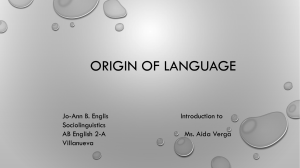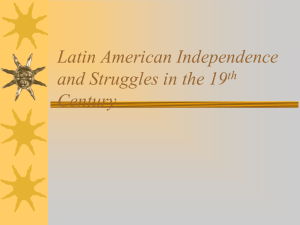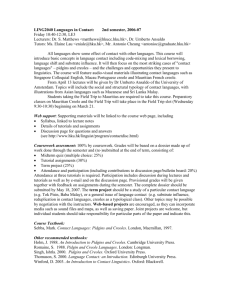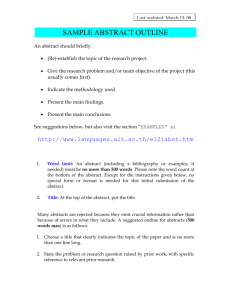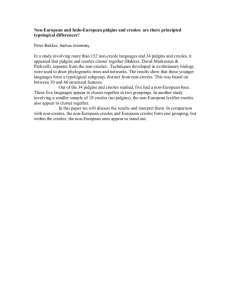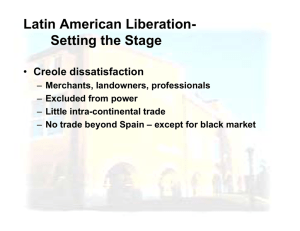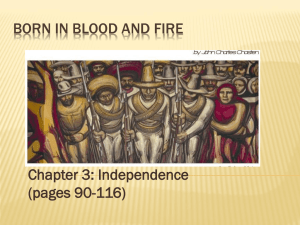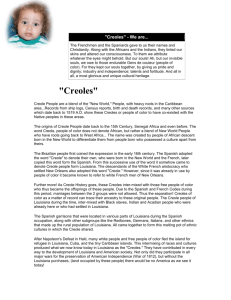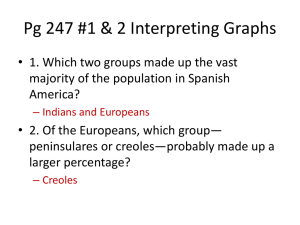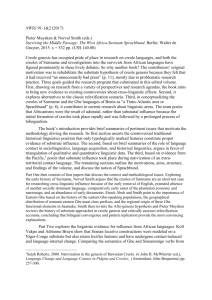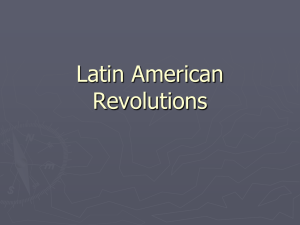Variation
advertisement
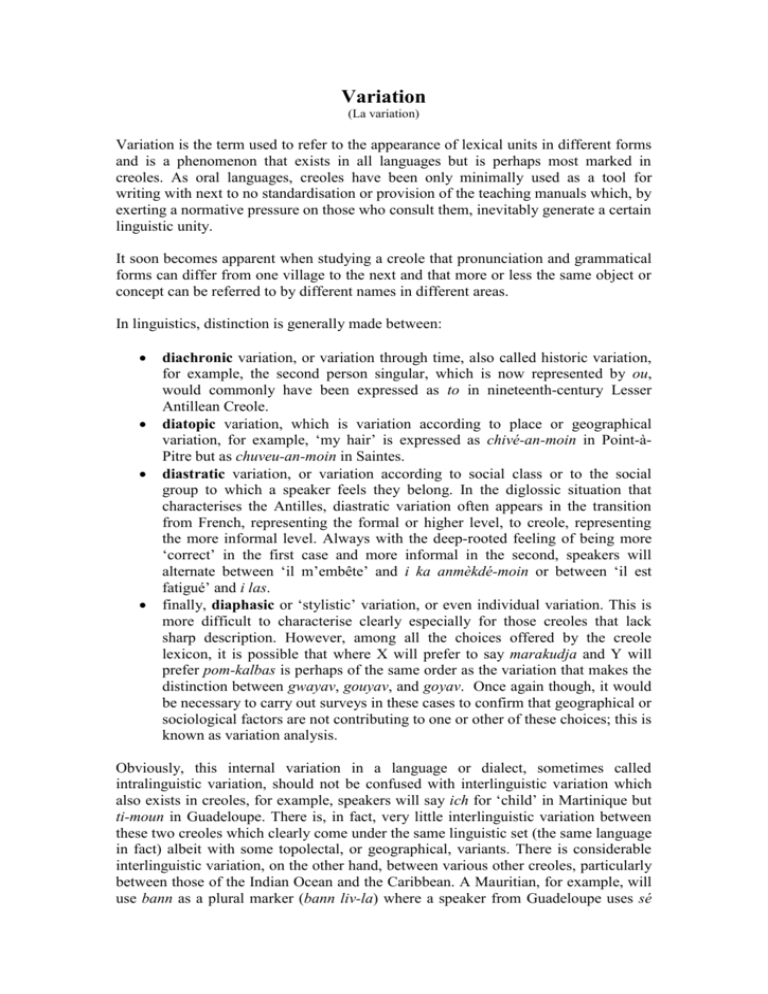
Variation (La variation) Variation is the term used to refer to the appearance of lexical units in different forms and is a phenomenon that exists in all languages but is perhaps most marked in creoles. As oral languages, creoles have been only minimally used as a tool for writing with next to no standardisation or provision of the teaching manuals which, by exerting a normative pressure on those who consult them, inevitably generate a certain linguistic unity. It soon becomes apparent when studying a creole that pronunciation and grammatical forms can differ from one village to the next and that more or less the same object or concept can be referred to by different names in different areas. In linguistics, distinction is generally made between: diachronic variation, or variation through time, also called historic variation, for example, the second person singular, which is now represented by ou, would commonly have been expressed as to in nineteenth-century Lesser Antillean Creole. diatopic variation, which is variation according to place or geographical variation, for example, ‘my hair’ is expressed as chivé-an-moin in Point-àPitre but as chuveu-an-moin in Saintes. diastratic variation, or variation according to social class or to the social group to which a speaker feels they belong. In the diglossic situation that characterises the Antilles, diastratic variation often appears in the transition from French, representing the formal or higher level, to creole, representing the more informal level. Always with the deep-rooted feeling of being more ‘correct’ in the first case and more informal in the second, speakers will alternate between ‘il m’embête’ and i ka anmèkdé-moin or between ‘il est fatigué’ and i las. finally, diaphasic or ‘stylistic’ variation, or even individual variation. This is more difficult to characterise clearly especially for those creoles that lack sharp description. However, among all the choices offered by the creole lexicon, it is possible that where X will prefer to say marakudja and Y will prefer pom-kalbas is perhaps of the same order as the variation that makes the distinction between gwayav, gouyav, and goyav. Once again though, it would be necessary to carry out surveys in these cases to confirm that geographical or sociological factors are not contributing to one or other of these choices; this is known as variation analysis. Obviously, this internal variation in a language or dialect, sometimes called intralinguistic variation, should not be confused with interlinguistic variation which also exists in creoles, for example, speakers will say ich for ‘child’ in Martinique but ti-moun in Guadeloupe. There is, in fact, very little interlinguistic variation between these two creoles which clearly come under the same linguistic set (the same language in fact) albeit with some topolectal, or geographical, variants. There is considerable interlinguistic variation, on the other hand, between various other creoles, particularly between those of the Indian Ocean and the Caribbean. A Mauritian, for example, will use bann as a plural marker (bann liv-la) where a speaker from Guadeloupe uses sé (sé liv-la); while both these forms are preposed, the Haitian will use the postposed –yo as a noun plural marker, as in liv-yo (‘the books’).
